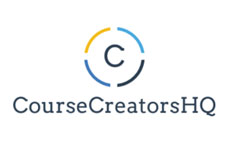
When it comes to course outlines, there are two types of thinkers…and your outline will be so much better if you understand how your brain works first.
Let’s start with a couple questions for you (jot down how many a’s and b’s you have):
1. When you create a text message or post on Facebook:
a. Nearly every one has emojis. I them, and use them often (or even all the time
!) OR
b. I may use them, but it’s not that often.
2. When you create a Google Doc or a Word doc, do you:
a. Click the icons? OR
b. Click the menu phrases?
3. You take a course and the instructor offers you a checklist and a mindmap. Which are you most excited about?
a. The mindmap OR
b. The checklist
4. When I say “think baseball”:
a. Do you see an image of a baseball, or maybe a baseball stadium with a game in process? IR
b. Do you see the word “baseball” spelled out in your mind?
5. Imagine you are shopping for can of green beans at the grocery store. As you scan the shelves, are you:
a. Looking for greenest and the best looking bean images on the cans? OR
b. Looking at the words on the cans – black beans, chili beans, green beans?
Now let’s determine which brain type you are.
If you mostly selected A’s, I call you Photo Friends (which is probably most of you!). Since our brains most often think in pictures, you need to use image techniques for your outline. Your brain works best when you can think and process in images. For you, an entire page of text can be overwhelming.
If you mostly selected B’s, I can relate and I call you Word Junkies. We are in the minority, but our brains focus more on text. Icons drive us nuts (I have spent so much time trying to figure out what an icon represents! What does that “arrow with a box” really do? My husband teases me about my lack of ability with software icons. I just want to see the words instead!) For us, too many pictures can be distracting.
Photo Friends
If you are a Photo Friend, here are three ways to improve your brainstorming and outlining process:
1. Use photos and emojis when it fits to help you see the pieces of your course puzzle.
2. Use mind mapping software to snag your initial course ideas and see the relationships between ideas and concepts.
3. Use post-it notes or index cards to separate your concepts into concrete “boxes” that you can move around, sort and stack into piles.
Once you have brainstormed your ideas, then you need to shift gears. Take your mind map or your “boxes” and put them into a logical order.
Ask yourself, what needs to come first? What does someone need to know or do before they can understand this concept or step? (For example, I needed to explain the difference between Photo Friends and Word Junkies before I could tell you how to use them.
If you struggle with this, don’t get frustrated. Get some help. Grab one of the most logical thinkers you know to go through your mind map, post-it notes and index cards with you. This may be an engineer, or a CPA, or that super-organized mom who always has her to do lists written each day! Let them ask you questions to help determine a logical order.
Word Junkie
If you are a Word Junkie, here are three ways to improve your brainstorming process for your outline:
1. Set a timer and make a list of all the topics related to your course.
2. Use Workflowy to build collapsible and movable outlines.
3. Use different sizes of type to distinguish big categories vs. small tasks.
Once you have your list, you need to put it into a logical order too. What comes first? What do I need to know or do before I can take this next step?
Your biggest challenge as a Word Junkie is that your students might not always understand the why behind what you are teaching. The relationship between steps may not be obvious. You’ll need to find and share the connections between your modules and lessons for your students. “We are doing this step now because then we will ___.”
Plus you’ll need to make yourself avoid PowerPoint slides full of text. Force yourself to only talk about one topic per slide and include photos during a lesson.
Use These Concepts in Your Next Course
By taking a few minutes to think about “how you think,” you’ll be so much better at putting together your next course outline and your presentations. I can’t wait to hear how it goes for you!
Now Take Action…
Let’s Spend 24 Hours and Get Your First (or Next!) Course Complete!

I believe creating a course can be easy and it doesn’t have to take forever. A lot of gurus make it way too complex.
Join me next Monday, June 22nd, and we will get your first (or next!) course done in just 1 hour a day.
I’ve used my Word Junkie brain to figure out all the steps for you
I’ve laid it out step-by-step, hour-by-hour… just sit down at your computer and get to work. No wasted time trying to figure out what to do next or getting lost in your own mind.
We will have Q&A times where I will help you get out of overwhelm or if you are stuck.
We will also have Co-Working Times where we use the gallery view on Zoom and all work for the same hour. There’s something powerful about working alongside others.
Please come join me:
https://www.24HourCourseCreator.com/daily
And be sure to check out the amazing bonuses!
Top Tool: MissingLettr
4,547. That’s how many clicks I’ve gotten from social media using MissingLettr to share my blog posts!
You know I am all about saving time, and MissingLettr is one of my secret promotion time savers.
It lets you take any link (I mostly use my blog posts, but you can use any link) and turn it into an entire YEAR of social media posts.
It even makes each post unique for you.
Watch the video here to see exactly how it works (make it full screen so you can see the details).
